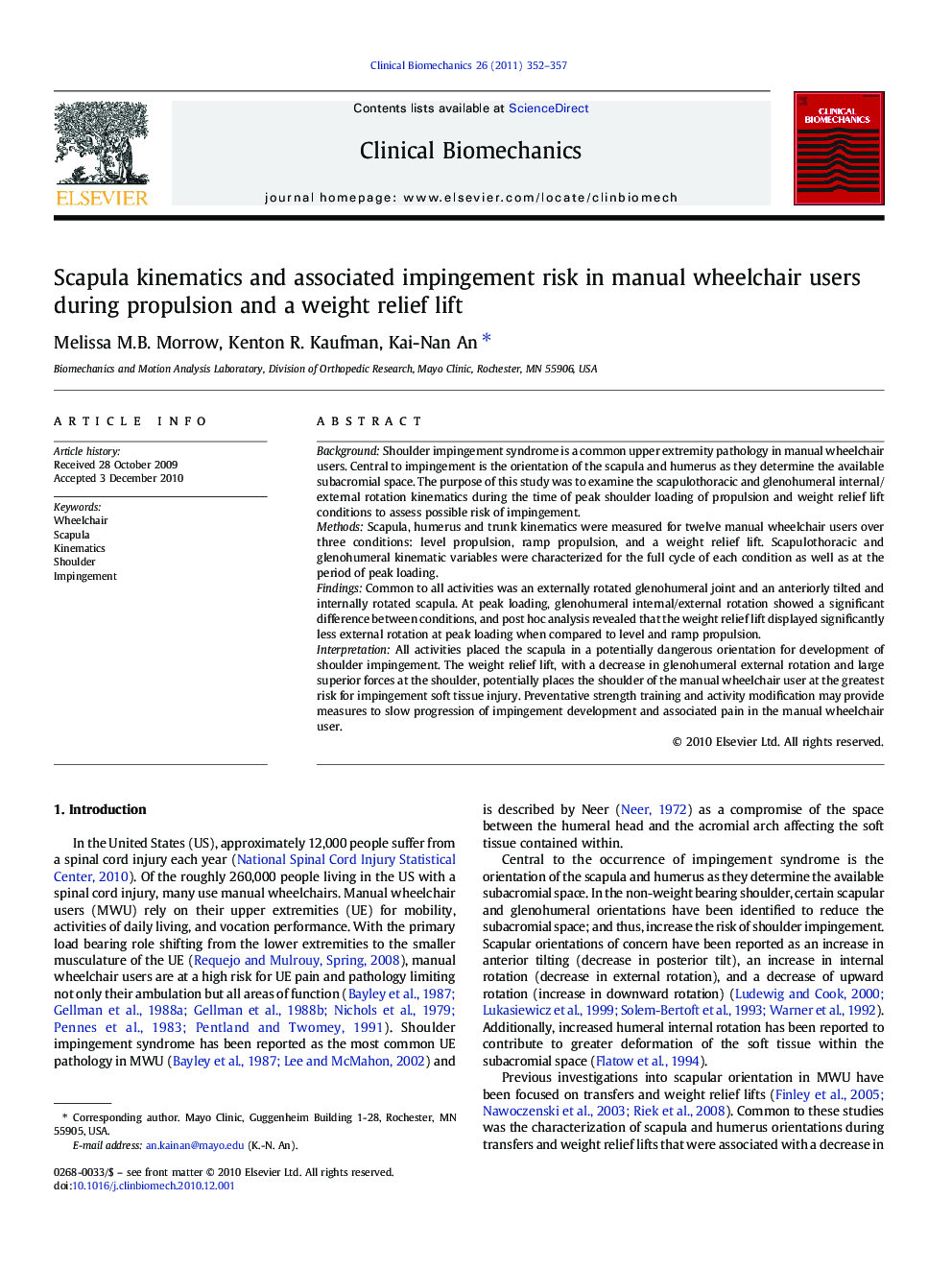| Article ID | Journal | Published Year | Pages | File Type |
|---|---|---|---|---|
| 4050820 | Clinical Biomechanics | 2011 | 6 Pages |
BackgroundShoulder impingement syndrome is a common upper extremity pathology in manual wheelchair users. Central to impingement is the orientation of the scapula and humerus as they determine the available subacromial space. The purpose of this study was to examine the scapulothoracic and glenohumeral internal/external rotation kinematics during the time of peak shoulder loading of propulsion and weight relief lift conditions to assess possible risk of impingement.MethodsScapula, humerus and trunk kinematics were measured for twelve manual wheelchair users over three conditions: level propulsion, ramp propulsion, and a weight relief lift. Scapulothoracic and glenohumeral kinematic variables were characterized for the full cycle of each condition as well as at the period of peak loading.FindingsCommon to all activities was an externally rotated glenohumeral joint and an anteriorly tilted and internally rotated scapula. At peak loading, glenohumeral internal/external rotation showed a significant difference between conditions, and post hoc analysis revealed that the weight relief lift displayed significantly less external rotation at peak loading when compared to level and ramp propulsion.InterpretationAll activities placed the scapula in a potentially dangerous orientation for development of shoulder impingement. The weight relief lift, with a decrease in glenohumeral external rotation and large superior forces at the shoulder, potentially places the shoulder of the manual wheelchair user at the greatest risk for impingement soft tissue injury. Preventative strength training and activity modification may provide measures to slow progression of impingement development and associated pain in the manual wheelchair user.
